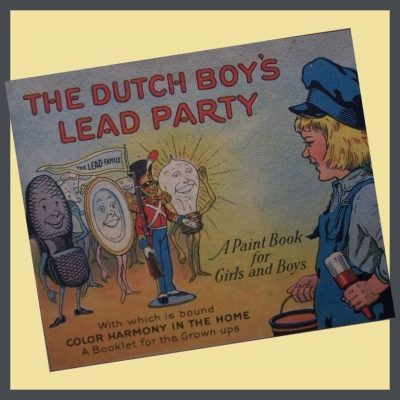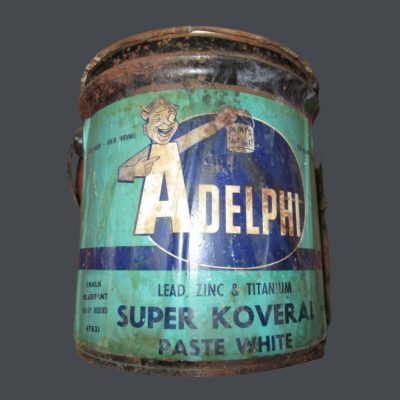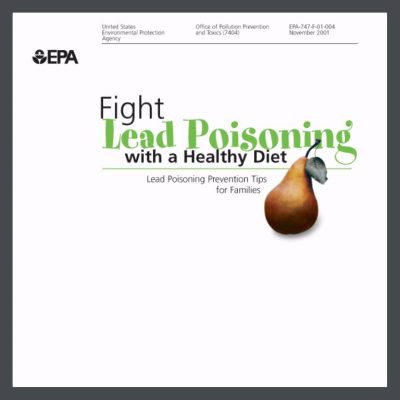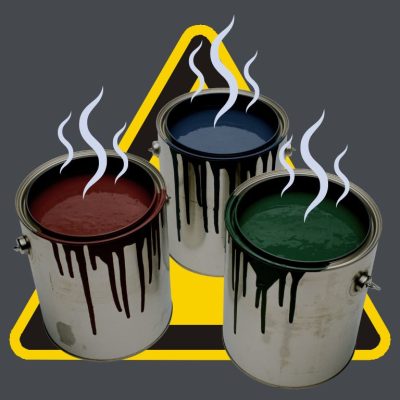IT’S ALL ABOUT THE CHEMISTRY- LEAD PAINT IN BUNGALOWS
 Yes, there is lead paint in bungalows. Let’s understand it & learn how to deal with it, better.
Yes, there is lead paint in bungalows. Let’s understand it & learn how to deal with it, better.
White lead, produced by corroding lead with vinegar, was used in historic paints to produce opacity thereby preventing the sun’s damaging rays from hitting the surface of the substrate. In addition, it was employed to decrease drying time & to increase durability. White lead also helped prevent the growth of mold & mildew.
In the early 1900’s, an effective substitute, titanium dioxide was developed & patented, but, the lead industry continued to mine & recommend lead, so we have lead on the walls of in our old houses & in our plumbing pipes. I have no children, so I am everybody’s mother. It hurts my heart to think of the children whose potential was & is still being diminished by their exposure to lead paint. (It’s my blog & I’ll cry if I want to.)
This charming little booklet, published in 1923, features the Dutch Boy on the cover, talking to the lead soldier. Inside there are 14 images of items that use lead such as a light bulb (lead glass), shoes & baseballs (lead in the rubber), & a bullet which we know is made of lead. A “Color Harmony in the Home” booklet is attached for adults. This coloring book for children was part of a campaign by the lead industry, portraying lead as a healthful element, necessary for a happy life.
The hideous truth is that lead’s toxicity was recognized & recorded as early as 2000 BC. Historians believe that the high exposure to lead, heavily used as a preservative, was a contributing force to the decline of the Roman Empire. In Germany, 1696, a decree was issued forbidding the use of lead-based additives in any wine product. The punishment for anyone who was discovered to have added it was death!
1763 Benjamin Franklin wrote about the “dry gripes” (colic) and “dangles” (wrist drop) which affected painters, typesetters & tinkers, who went from house to house repairing household items made of metal. You can read his letter to a friend, both horrible & fascinating, about the ill effects of lead that he had observed, here.
 In “Star of the East,” Charles Dickens, an astute observer of the damaging effects of the Industrial Revolution, wrote about the terrible results of lead poisoning on the poor women who worked in London’s white lead mills. “Her brain is coming out her ear & it hurts her dreadful…”.
In “Star of the East,” Charles Dickens, an astute observer of the damaging effects of the Industrial Revolution, wrote about the terrible results of lead poisoning on the poor women who worked in London’s white lead mills. “Her brain is coming out her ear & it hurts her dreadful…”.
In the 18th, 19th & 20th centuries it was well known that to work in an industry where you handled lead was going to make you sick or even kill you. However, here in the United States, the lead industry fought fiercely to quiet, even intimidate, researchers & doctors who reported on or identified lead as a hazard. In 1867, the first prepared or “ready mixed” paints in the United States, were developed, spreading the lead danger to the people who worked in the paint plants, & on their dusty work clothes, to their families at home.
Lead was banned from house paint in Australia in 1914. That same year, childhood lead poisoning was first reported in America. However, lead wasn’t banned for use in paint in America until1978, a full generation later. And that’s why there’s lead paint in bungalows. Gack!
WHY AM I TELLING YOU ABOUT LEAD PAINT IN BUNGALOWS?
 Because the first people that I ever knew to renovate an old house had a baby. Mom was pregnant during the work & when she delivered, it was tragic. I am not going to describe the situation to you any more than this, but it affected me profoundly. The baby was tested for heavy metals & she was off the charts for lead.
Because the first people that I ever knew to renovate an old house had a baby. Mom was pregnant during the work & when she delivered, it was tragic. I am not going to describe the situation to you any more than this, but it affected me profoundly. The baby was tested for heavy metals & she was off the charts for lead.
Many of you will be hiring painters. Lead paint disturbance is highly regulated by the EPA, but it is also highly disregarded as a hazard, because some people don’t care about mothers & babies & mitigation can drive costs up. I urge you to be willing to pay the higher expense of hiring a painter who does care about mothers & babies, & is certified (by the EPA) to test for & handle lead. The EPA lead booklet, Renovate Right, which will provide guidance for you can be found here.
Another EPA booklet, Fight Lead Poisoning with a Healthy Diet explains how you can help your children by providing them with good nutrition. It tells you to keep them well fed because children with empty tummies absorb more lead than children with full ones. It advises you to serve foods rich in iron, calcium & Vitamin C which can help protect children from lead poisoning. It provides lists of foods with these nutrients.
THE EPA also offers recommendations for lead test kits. There are techniques & tools that can be used in handling lead. If you live in a house built before 1978, you should assume that you have some lead paint in your house. You might want to perform lead testing in your bungalow.
If you use a pro to paint, I am suggesting strongly that whomever you hire is trained & certified by the EPA to perform lead testing. They will give you a copy of Renovate Right.
WHAT IS PAINT?
Pigment, Binder & Vehicle
Paint is a dispersion, a mixture in which fine particles of one substance are scattered throughout another substance. It contains small solid particles, usually crystalline, (describing a substance in which the constituent atoms, molecules, or ions are arranged in a regular, repeating three-dimensional pattern) in a liquid medium. When it is applied to a surface, it dries to a solid, protective film, which enhances the beauty of the object to which it is applied.
Pigment
The pigment is the part that we usually care about the most- the color. However, it also has the job of making the paint opaque, blocking ultraviolet light, which causes deterioration to the substrate (an underlying layer or substance.) You have seen old buildings covered in flaking paint whose wood is clearly dried & deteriorating. It’s not protected.
Coloring pigments were also added. Originally, these colors were from natural sources but expanded in range & materials as chemists created more hues.
Binder
For oil-based paints, linseed oil, a colorless to yellowish oil obtained from the dried, ripened seeds of the flax plant (Linum usitatissimum), was frequently chosen because it is a drying oil. It causes the paint to darken over time, which is why Jane Powell always hollered about the use of white-white paint. It’s just not a historic possibility!
Vehicle
The fluid component was termed the vehicle, or medium, because it carried the pigment. Historically, vehicles included turpentine in oil paints. Linseed oil paint was often thinned with an organic solvent, such as turpentine for easier spreading & the enhancing of its drying speed.
Recently, people have become more generally aware of the dangers that these chemical pose. We use latex paints which, while they may not contain lead, release fumes containing a variety of chemicals, some of which may have short- & long-term adverse health effects as they dry & cure which can take some weeks. The fumes are produced by Volatile (easily evaporated at normal temperatures) Organic Compounds (organic compounds are generally any chemical compounds that contain carbon-hydrogen bonds.)
MORE THAN JUST LEAD IN BUNGALOW PAINTS
 Modern paints are far more complex chemically than early paints. Additional ingredients have been added to the simple 3-part system of pigment, binder, & vehicle. Different paints have different chemical make-ups. The actual gases depend on the formula of the paint. Usually, the greater heavily tinted & glossy the paint, the more VOCs are released.
Modern paints are far more complex chemically than early paints. Additional ingredients have been added to the simple 3-part system of pigment, binder, & vehicle. Different paints have different chemical make-ups. The actual gases depend on the formula of the paint. Usually, the greater heavily tinted & glossy the paint, the more VOCs are released.
Be aware that even today, there are other chemicals in paint that are hazardous. Make sure that you follow all the safety instructions- PPE, ventilation, clean-up & disposal- that are suggested by the manufacturer. Here’s an article on how to read a Safety Data Sheet. Encourage your painter to do the same. Yes, he may grumble, but if he hears it enough, he just might listen. Here are some videos that will provide you with an orientation to the use of PPE as suggested in the Safety Data Sheet.
There are low & no-VOC options & more are being formulated all the time because of public demand. In the future, I’m going to post a blog about how to read a Safety Data Sheet. I wish like heck that I could type faster!
LET’S HEAD ON OVER TO PART 5, HISTORIC PAINT COLORS HERE.
 STAY IN THE BUNGALOW KNOW!!!
STAY IN THE BUNGALOW KNOW!!!
Sign up for our newsletter & receive our FREE E-book, 7 VITAL Things to Do Before You Hire a Contractor.



Thank you very much for this usefull information! It’s said that lead paint in good shape can generally be paint over and the high risk avoided. You should not attempt to scrape, sand or use a heat gun on lead. EPA protocol is very much necessary and worth it for health sake. It’s good to know that programs can help offset the costs of abatement when young children are involved. Mandatory to do so for renters.
-Stinks living in an area dominated by Sherwin-Williams lead paint of the early years.
You are welcome. Yes, it very necessary to follow the protocols set forth by the EPA. We need to consider our children’s futures, & the futures of those children that we may never know, whose fate we hold in our hands.
I’ll bet it does!